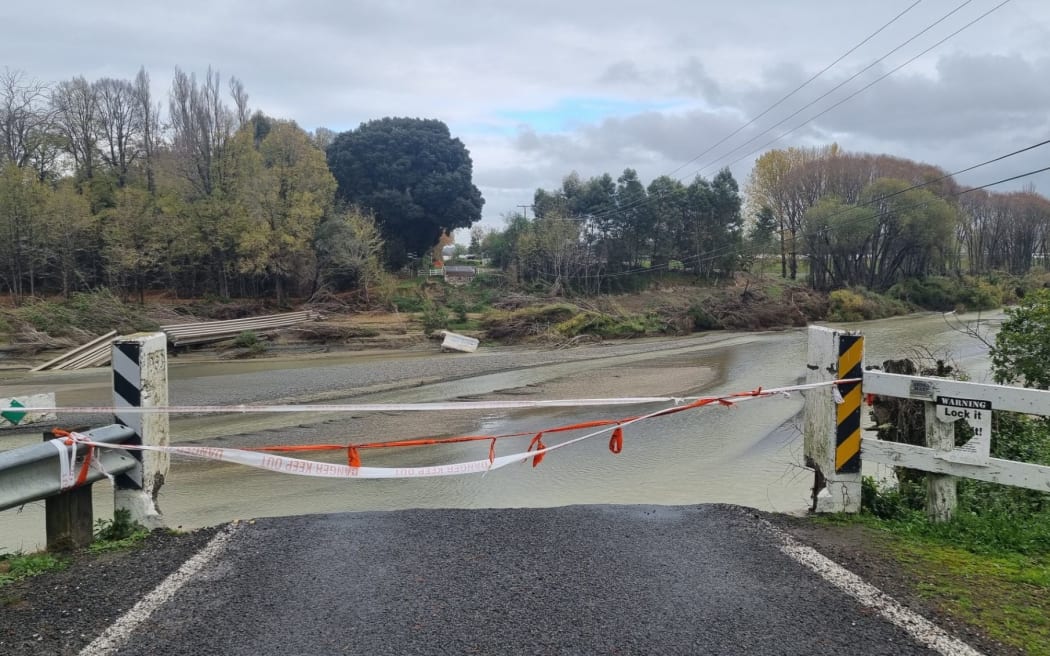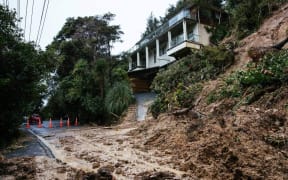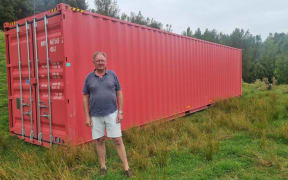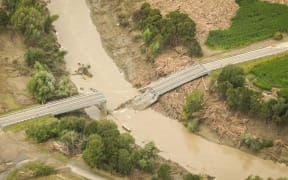
Puketapu bridge in Hawke's Bay - swept away in Cyclone Gabrielle Photo: RNZ / Lauren Crimp
Scientific analysis of the flooding caused by Cyclone Gabrielle has shown flood protection in Hawke's Bay had no chance of standing up to a flood of that size.
The report was commissioned and funded by the Ministry of Business, Innovation and Employment (MBIE) and carried out by the National Institute of Water and Atmospheric Research (NIWA).
Flood data was analysed from 20 river gauge sites across Hawke's Bay during the cyclone, which showed at 13 of the 20 sites, it was the largest flood on record.
NIWA's principal scientist for natural hazards and hydrodynamics Dr Emily Lane said it had reset the scale for flooding in the region.
According to NIWA modelling, the probability of a flood this size occurring in any given year was previously thought to be one in 1000. Now, the council's best estimate was one in 550 years.
"It's vital we factor this into our understanding of future flood hazards," Lane said.
But in two areas in particular, the NIWA data was less certain. In Waipawa and Esk Valley, two of the worst-hit areas, the council said further work was required to design appropriate flood protection.
For now, flood protection remained within the one in 100-year standard.
Gabrielle was not the largest flood on record at Ngaruroro River at Whanawhana, Tukituki River at Redbridge, Waiau River at Ardkeen, Waiau River at Otoi, Hangaroa River at Doneraille Park, Ruakituri River at Tuwharetoi, and Kopuawhara Stream at Railway Bridge.
Hawke's Bay Regional Council Chair Hinewai Ormsby said the report was one piece of the puzzle to inform the flood protection review, which was currently underway.
"The modelling reinforces that the cyclone flooding was largely unprecedented," she said. "The sheer volume of the cyclone's flooding and its impacts on flood mitigation infrastructure could be compared to having a 100-bed hospital where suddenly 500 patients turn up."
Regional council group manager for asset management Chris Dolle, said the report would allow concept designs for stopbanks and other infrastructure to be fine-tuned.





